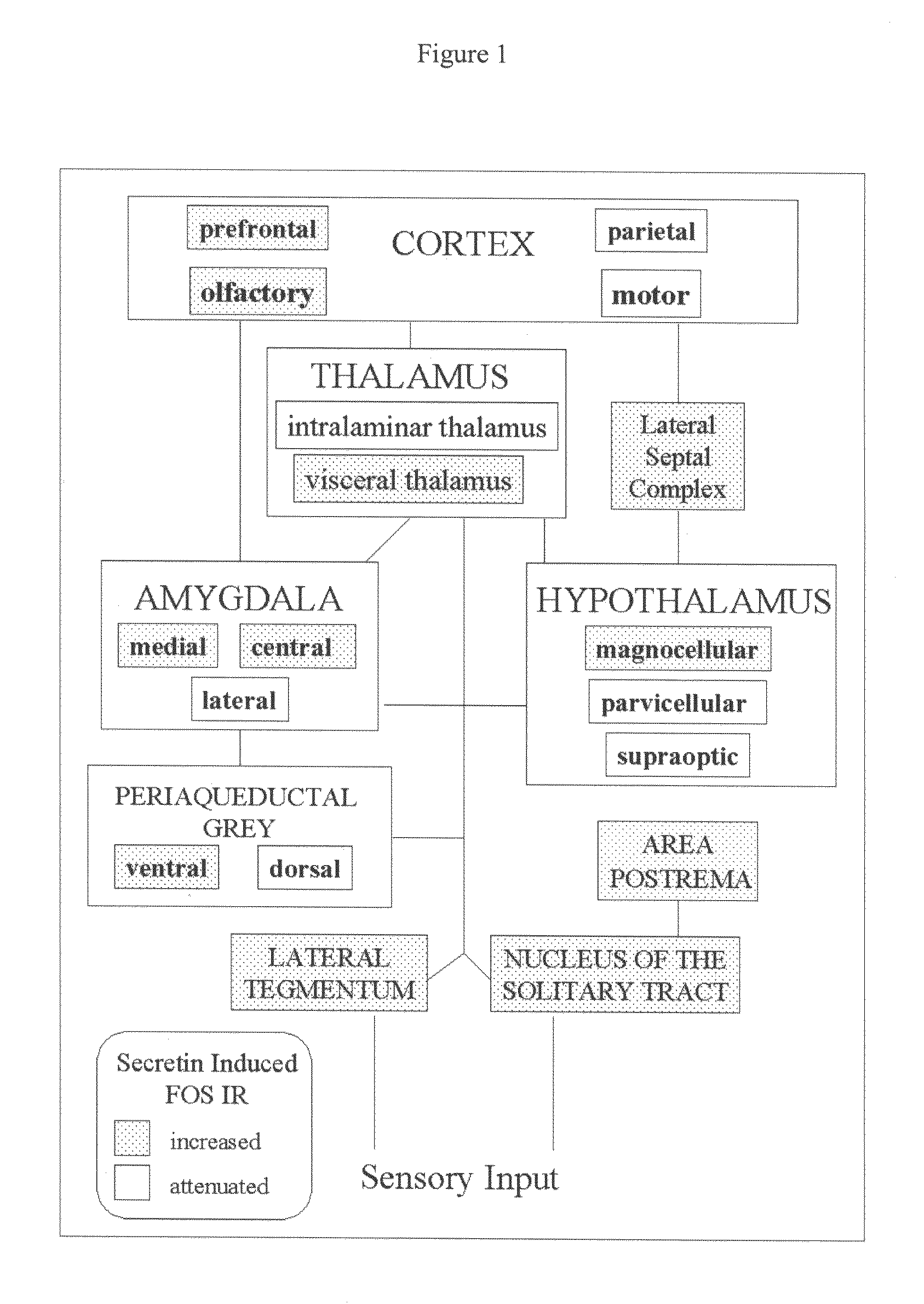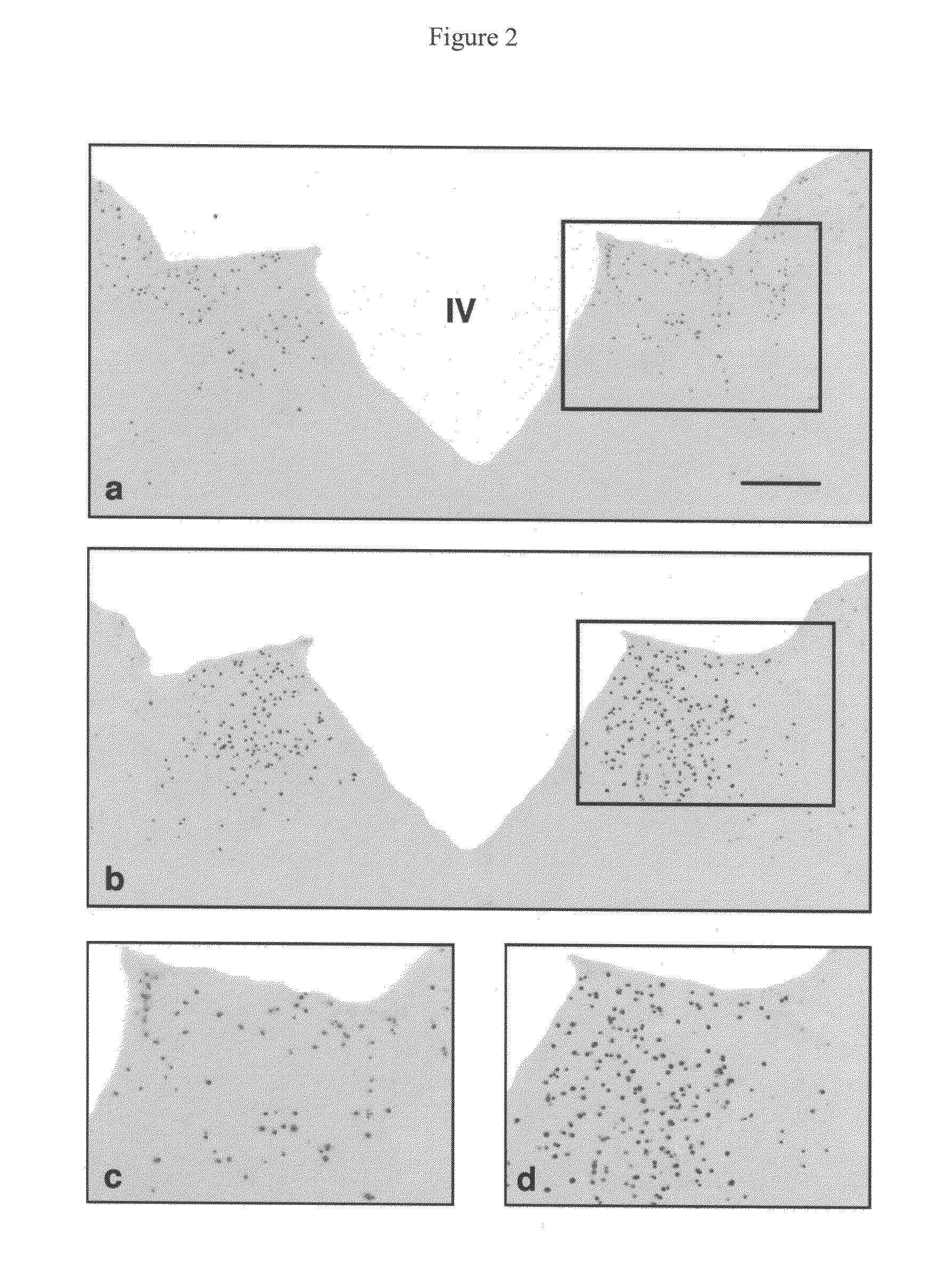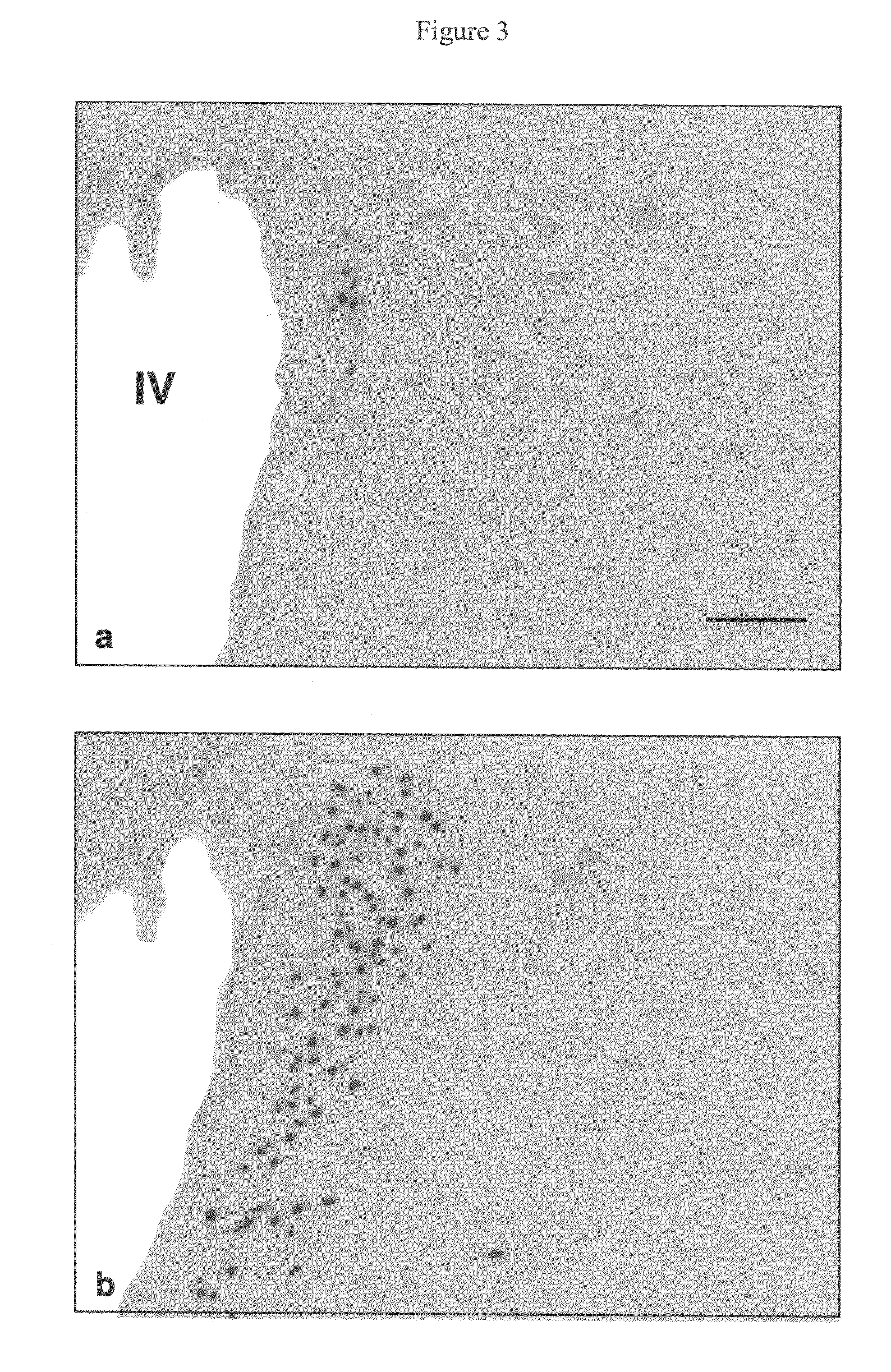Multipeptide regimen for the treatment of autistic spectrum, behavioral, emotional and visceral inflammation/autoimmune disorders
a multi-peptide, autistic spectrum technology, applied in the direction of peptides, peptide/protein ingredients, drug compositions, etc., can solve the problems of inability to treat autism, social and economic costs of autism, and inability to completely eliminate autism symptoms, etc., to achieve effective treatment of autism and alter heart rate variability
- Summary
- Abstract
- Description
- Claims
- Application Information
AI Technical Summary
Benefits of technology
Problems solved by technology
Method used
Image
Examples
example 1
[0093]In the following study, the inventors investigated whether central networks are involved in the presumptive behavioral and autonomic regulatory actions of secretin. The inventors discovered that secretin alters the activity of structures involved in behavioral conditioning of stress adaption and visceral reflex reactions.
[0094]Animals and Surgical Procedures
[0095]The inventors obtained data in eight adult male Sprague-Dawley rats weighing 250-450 g. The rats were obtained from Hilltop Lab Animals, Inc. (Scottdale, Pa.). Under ketamine-xylazine anesthesia, using sterile techniques, a stainless steel guide cannula was stereotaxically inserted into the lateral ventricle of each rat. Each cannula was affixed in place with dental cement secured to the skull. To prevent clogging, a removable 27 gauge wire was inserted into the guide cannula. The placement of the cannula with reference to bregma was 1.4-mm lateral, 0.5-mm caudal, and a depth of 2.5 mm from the surface of the skull. T...
example 2
[0126]In the following study, the inventors sought to determine whether secretin is synthesized centrally, specifically by the hypothalamic-pituitary-adrenal (HPA) axis. The inventors demonstrated secretinergic immunoreactivity in the hypothalamus of a rat. The inventors also demonstrated that secretin levels were up-regulated by colchicine, an exemplar of homeostatic stressors, as compared with low constitutive expression in untreated rats.
[0127]Methods
[0128]Experiments were performed on 12 male Sprague-Dawley rats (250-300 grams) maintained in a thermally controlled, light-cycled environment with lab chow and water ad libitum.
[0129]Colchicine pretreatment was necessary to identify secretin immunoreactivity product in neurons expressing constitutively low basal secretin immunolabeling as shown in pilot studies of untreated animals (n=6). Colchicine, a metabolic stressor, acts by disrupting the microtubule network and by blocking axonal transport leading to a buildup of cytoplasmic ...
example 3
[0165]In this study, the inventors evaluated the efficacy of maternal intervention, including the reinstatement of specific components of maternal nurturing and establishment of synchronous attunement in cases of serious childhood behavioral disorders, including symptom complexes meeting criteria for oppositional defiant disorder. The inventors also evaluated implications of this study for neuropeptide thearpy. The inventors discovered that maternal intervention that includes reinstatement of specific components of maternal nurturing, including the establishment of synchronous attunement between mother and child, and / or treatments that replicate these effects pharmacologically, can be effective in ameliorating severe behavioral symptomology.
[0166]Study Group
[0167]Subjects were from an unselected group of children diagnosed prior to referral with two or more of the following disorders: conduct disorder, oppositional defiant disorder, reactive attachment disorder, attention deficit di...
PUM
| Property | Measurement | Unit |
|---|---|---|
| depth | aaaaa | aaaaa |
| time | aaaaa | aaaaa |
| pH | aaaaa | aaaaa |
Abstract
Description
Claims
Application Information
 Login to View More
Login to View More - R&D
- Intellectual Property
- Life Sciences
- Materials
- Tech Scout
- Unparalleled Data Quality
- Higher Quality Content
- 60% Fewer Hallucinations
Browse by: Latest US Patents, China's latest patents, Technical Efficacy Thesaurus, Application Domain, Technology Topic, Popular Technical Reports.
© 2025 PatSnap. All rights reserved.Legal|Privacy policy|Modern Slavery Act Transparency Statement|Sitemap|About US| Contact US: help@patsnap.com



